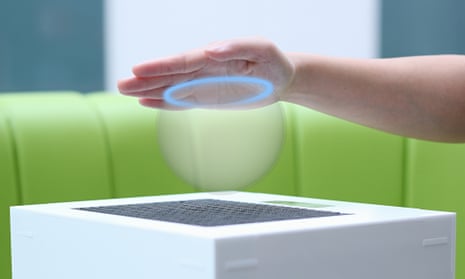Virtual reality has a problem that’s hard to grasp
In the immersive virtual-reality experiences that game developers are currently building for hardware such as Oculus Rift, visual and aural perceptions can be very convincing. But as absorbing as it might be, the lack of one sense can present an especially jarring distraction. In VR worlds, and even in ordinary games, we are rarely afforded the chance to touch, to feel. Beyond feedback through vibration, communicating the physical is remarkably difficult.
But a Bristol academic project may have just cracked it
Ultrahaptics started life during an undergraduate project of computer scientist and company CTO Tom Carter. Through a PhD and much collaboration, Carter and his team have conceived a way to build 3D shapes in thin air that you can feel and interact with.
Shapes made from thin air?
The Ultrahaptics technology uses a grid no bigger than an LP packed with small ultrasonic speakers – the kind used in ultrasound scans – to project interactive shapes in front of the player. The team can currently create sound waves that you can feel, hovering 3D dials, or even a game of Pong where you feel the ball bounce off your palm.
But you won’t be leaning on an ultrasound wall any time soon
Ultrahaptics technology is workable, and quite staggering to experience. But shapes made from air, though very tangible, are delicate. A rock-hard VR environment built from ultrasound isn’t a reality yet, but objects that Ultrahaptics allow you to touch inside virtual reality, such as a force field or buttons in a cockpit in an alien spacecraft, very much are.
And it doesn’t stop with games
Ultrahaptics hope to see their technology used in the home, such as controlling the cooker when your hands are covered with food. There’s a plan for a car dashboard in touchable sound, to stop drivers fumbling for buttons.

Comments (…)
Sign in or create your Guardian account to join the discussion